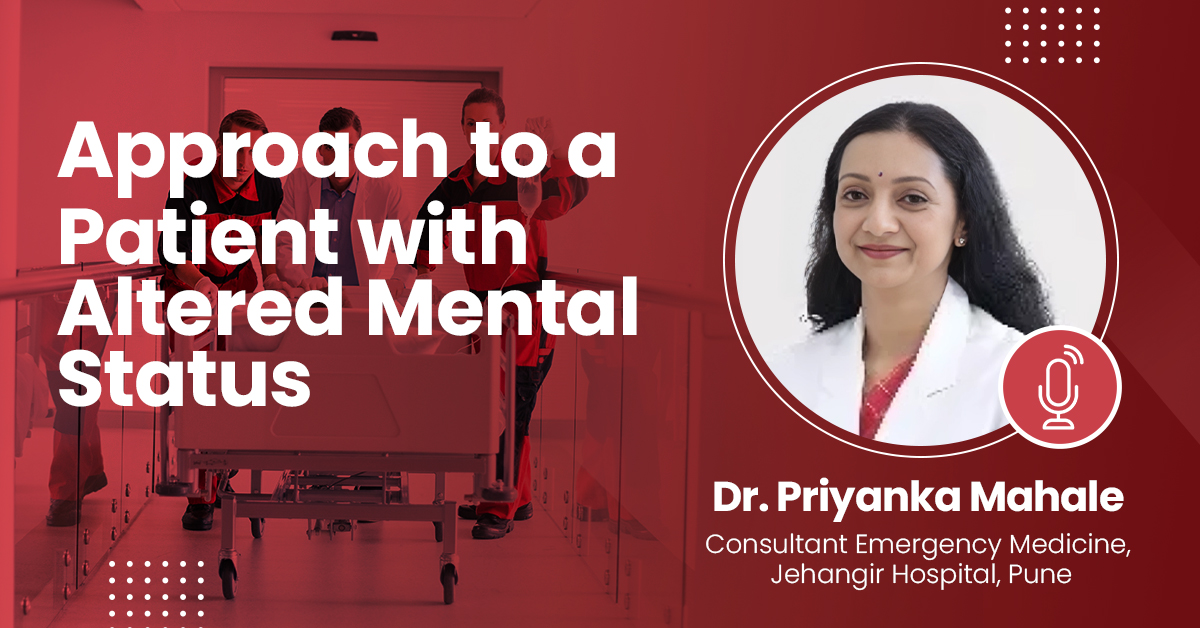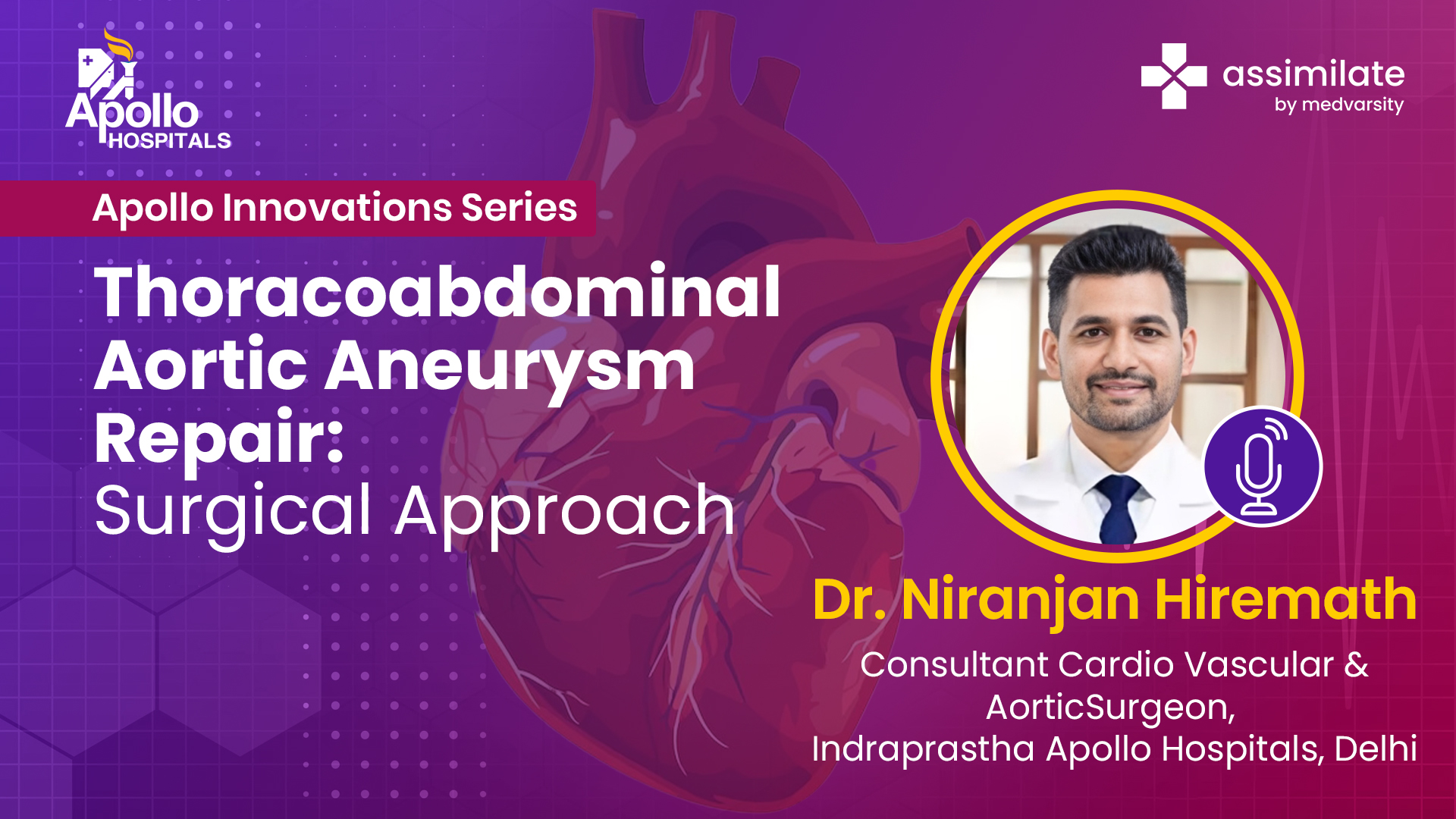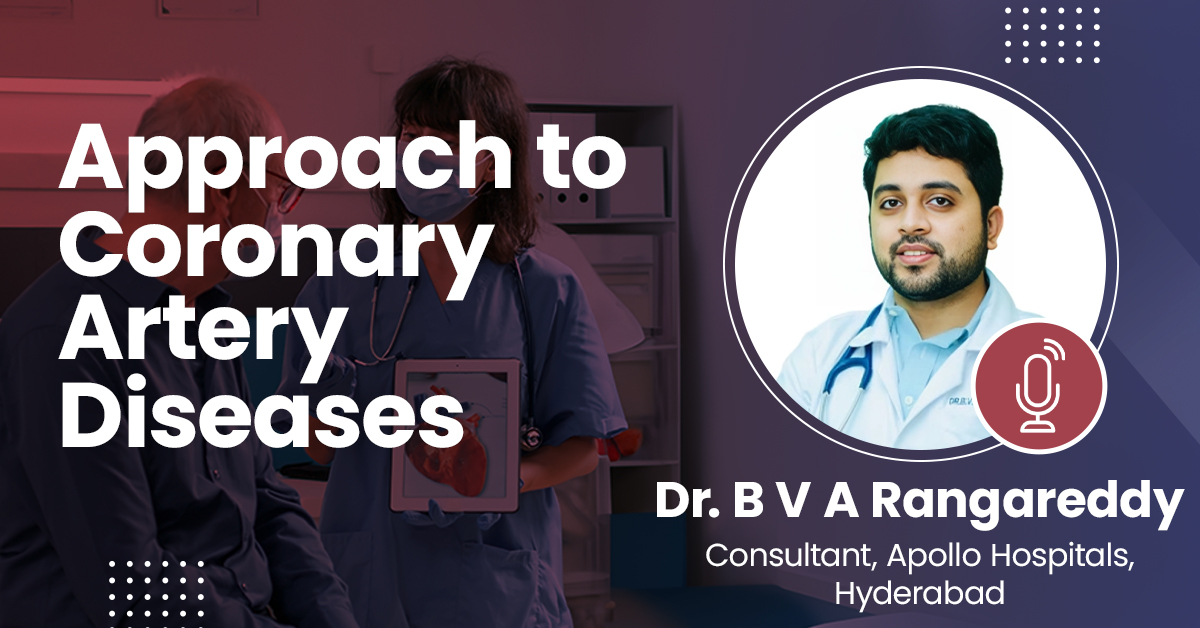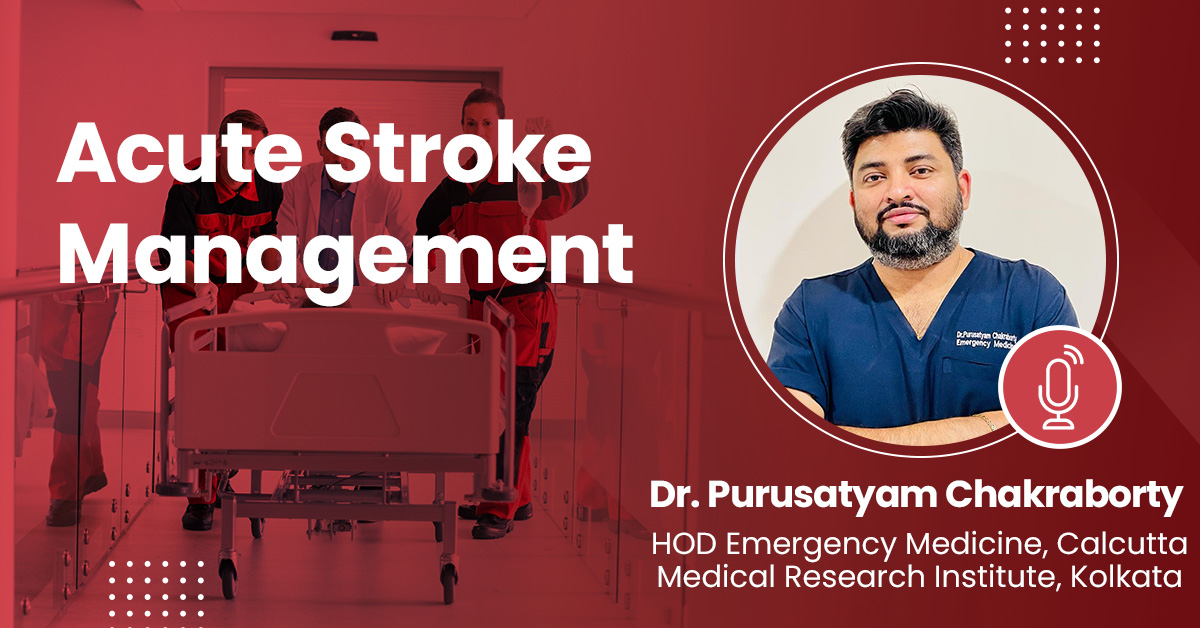- 50.6k views
Acute Stroke Management
Acute stroke management requires a time-sensitive and multidisciplinary approach. Rapid recognition of stroke symptoms, such as sudden onset of facial droop, arm weakness, or speech difficulties, is crucial for activating emergency medical services. Intravenous administration of tissue plasminogen activator (tPA) within the first few hours of symptom onset remains a cornerstone of acute ischemic stroke treatment, aiming to dissolve the clot and restore blood flow to the brain. For eligible patients, mechanical thrombectomy, a procedure to physically remove the clot, has shown efficacy in improving outcomes. Alongside these interventions, supportive care, close monitoring, and post-stroke rehabilitation contribute to optimizing recovery and reducing the long-term impact of stroke on patients' lives.
About the Speaker

Dr.Purusatyam Chakraborty
Consultant & Head Dept Of Emergency Medicine CMRI Hospital,Kolkata
Dr. Purusatyam Chakraborty is a seasoned medical professional with extensive expertise in Emergency Medicine. Currently serving as the Consultant and Head of Emergency & Triage at Calcutta Medical Research Institute, he brings over a decade of experience to his role. His leadership in emergency medical services is well-established through previous positions as Associate Consultant at BM Birla Heart Research Centre and Jr. Consultant at Kothari Medical Centre, where he managed acute care services and headed emergency departments.
Upcoming Case Discussions
Approach to a Patient with Altered Mental Status
The evaluation of a patient with altered mental status begins with a detailed history. Because the patient may be unable to offer a history, it will be required to seek additional information from family, friends, or the primary medical team. The first step is to ascertain the timing of the mental status change and the circumstances surrounding it, such as medication/drug usage or trauma. An acute change in mental state is a medical emergency that necessitates an immediate, systematic evaluation. Airway, breathing, and circulation ("ABC's") should be evaluated in conjunction with an updated set of full vital signs and finger-stick blood glucose. Tachycardia may indicate a systemic infection, pulmonary embolism, or atrial fibrillation with high ventricular rate.
Thoracoabdominal Aortic Aneurysm Repair: Surgical Approach
A 31-year-old woman from Kenya presented at Indraprastha Apollo Hospitals, New Delhi, with occasional back and abdominal pain and was diagnosed with Takayasu’s arteritis, a thoracoabdominal aortic aneurysm (TAAA), and anti-nuclear antibodies (ANA) positivity. Her condition, complicated by the use of immunosuppressants and anticoagulants, posed significant medical challenges, particularly the high risk of aortic rupture. A multidisciplinary team optimized her care, addressing both her autoimmune disease and medication needs. The complex surgical repair of her TAAA was performed using a unique technique developed by Dr. Niranjan Hiremath, with support from Dr. B N Das, showcasing the hospital's expertise in managing high-risk aortic diseases. This case highlights the importance of innovative approaches and collaborative care in achieving successful outcomes for complex conditions.
AI Solutions for Hospitals
AI in healthcare is the application of machine learning, natural language processing, deep learning, and other AI technologies to improve the experiences of both healthcare workers and patients. AI's data-processing and prediction skills allow health practitioners to better manage their resources and tackle many facets of healthcare in a more proactive manner. With these technology, doctors can make faster and more accurate diagnoses, health administrators can find electronic health information more quickly, and patients can receive more timely and individualized care.
Anemia in Dialysis Patients: Recent Evidence
The evaluation of a patient with altered mental status begins with a detailed history. Because the patient may be unable to offer a history, it will be required to seek additional information from family, friends, or the primary medical team. The first step is to ascertain the timing of the mental status change and the circumstances surrounding it, such as medication/drug usage or trauma. An acute change in mental state is a medical emergency that necessitates an immediate, systematic evaluation. Airway, breathing, and circulation ("ABC's") should be evaluated in conjunction with an updated set of full vital signs and finger-stick blood glucose. Tachycardia may indicate a systemic infection, pulmonary embolism, or atrial fibrillation with high ventricular rate.
Approach to Coronary Artery Diseases
Coronary artery disease (also known as coronary heart disease) is the leading cause of death for both men and women and the most frequent type of heart disease. This largely preventable condition causes hazardous thickening and narrowing of the coronary arteries—the channels that bring blood to the heart—interrupting the passage of oxygen and nutrients to the heart, resulting in major complications. Angina (chest pain) can result from coronary artery disease when there is insufficient blood flow. Over time, the heart needs to work harder, which can lead to heart failure (when the heart is unable to pump adequately) or arrhythmia. The injured arteries may become fully clogged or prone to clotting, resulting in a heart attack.








